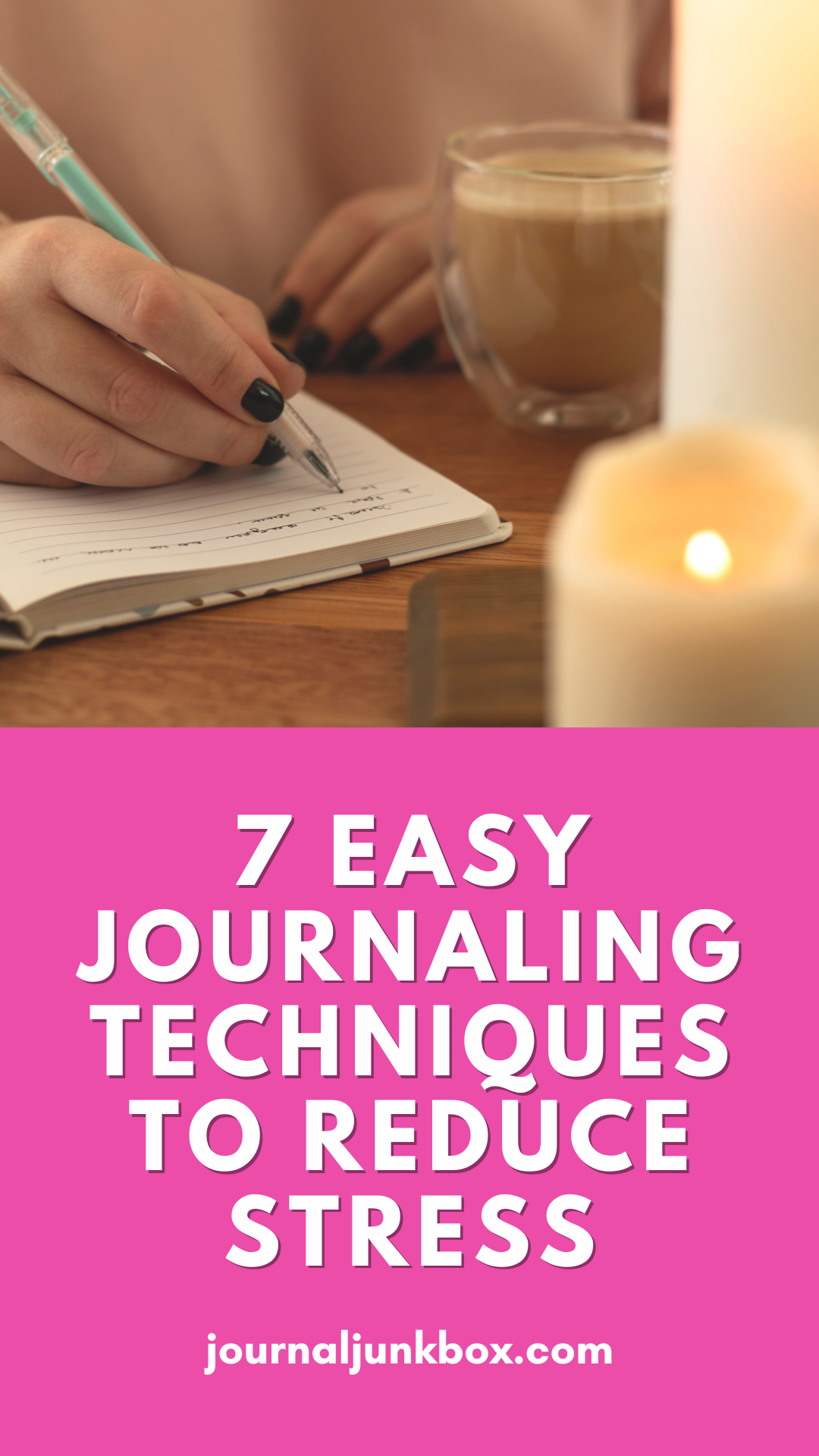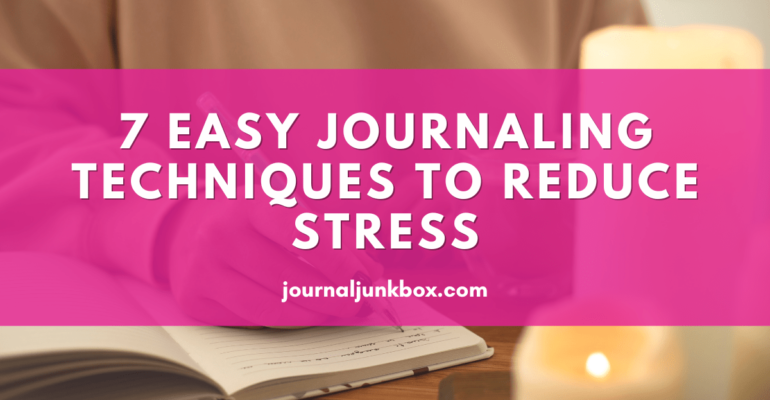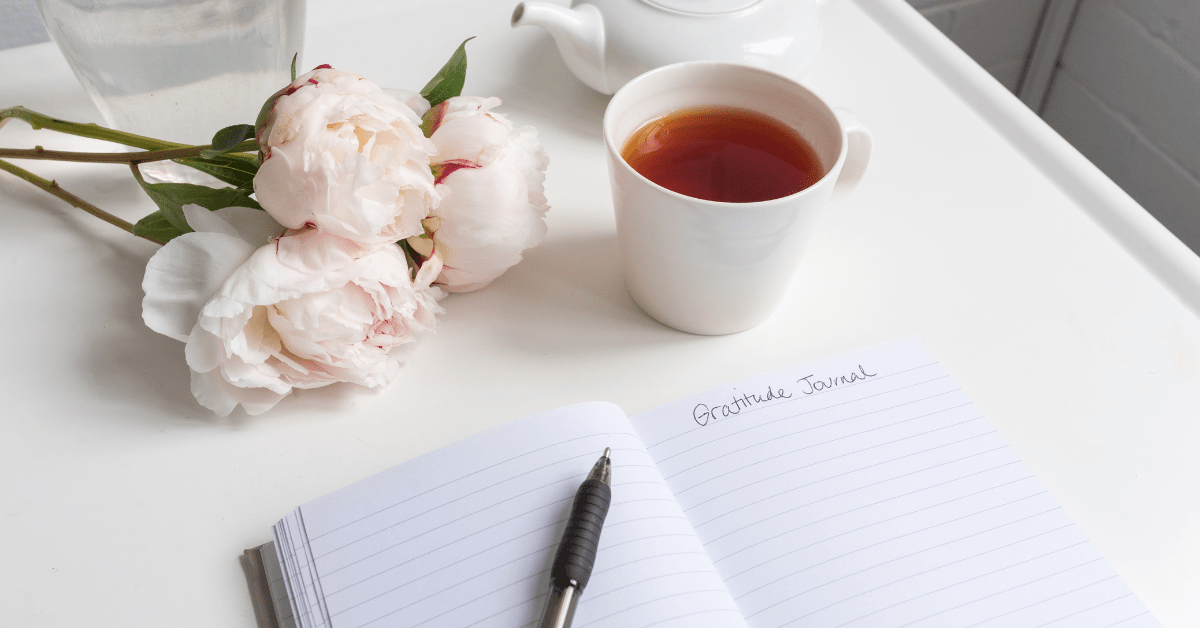7 Easy Journaling Techniques to Reduce Stress
April 4, 2025 2025-04-04 21:587 Easy Journaling Techniques to Reduce Stress
April is Stress Awareness Month, a time to pause, reflect, and focus on our mental well-being. If you’ve been feeling overwhelmed or stretched thin, you’re not alone. One of the simplest yet most powerful stress management tools is something you can do with just a notebook and pen: journaling for stress relief.
Whether you’re brand new to journaling or just looking for easy stress relief techniques, these seven ideas are gentle, effective, and easy to start today.
1. The One-Minute Dump
If your mind feels like a browser with 20 tabs open, this technique is for you. Set a timer for one minute and write everything that’s on your mind. Don’t overthink it—just let your thoughts spill onto the page. This quick method is a great starting point if you’re new to journaling.
A Quick Fix for Mental Clutter
It helps reduce being overwhelmed and brings instant relief by emptying your mental load onto paper. Think of it as a brain reset button.
Why It Works:
This simple self-care idea helps release pent-up thoughts, reduce anxiety, and free up mental space fast.
2. Gratitude Journaling
Gratitude journaling is one of the simplest yet most powerful ways to shift your mindset. Over time, this builds a habit of noticing the positives, even during difficult seasons.
This technique encourages emotional balance, reduces stress, and promotes a sense of peace. It’s a beautiful way to end your day on a high note or begin your morning with intention.
Focusing on the Good Stuff
Write down 3–5 things you’re grateful for each day, no matter how small. A warm cup of tea, a smile from a friend, or a good hair day—it all counts.
Why It Works:
Practicing gratitude helps shift your mindset and is a powerful tool for mental health journaling.
3. The “What’s Bothering Me?” Page
Sometimes, we carry stress without even realizing it. This technique helps you get to the root of what’s really stressing you out. By putting it on paper, you gain clarity and a chance to release what no longer serves you.
Face It, Then Let It Go
Write the sentence “What’s bothering me today?” at the top of your page. Let yourself answer honestly and fully.
Why It Works:
This beginner journaling method lets you process emotions in a safe, judgment-free space.
4. Mindful Journaling Prompts
When your mind feels busy, mindful prompts can help you pause and reconnect with yourself. Choose one prompt and explore it in writing for a few minutes.
A More Intentional Approach
Use calming prompts like:
✨What does calm feel like to me?
✨When do I feel most at peace?
✨What’s something I need to hear today?
Why It Works:
These mindful journaling prompts help connect you with your inner voice and bring clarity during stressful times.

5. List Journaling
Sometimes, writing full paragraphs can feel overwhelming. That’s where list journaling comes in. It’s low-pressure and still deeply effective.
When Writing Paragraphs Feels Too Hard
Create short, themed lists like:
✨Things I love about my life right now
✨Songs that always make me feel better
✨Little victories from today
Why It Works:
List journaling is great for busy or overwhelmed days—it’s easy to do, yet still meaningful.
6. Visual Journaling
Not every journal entry needs words. If you’re feeling creatively inclined or emotionally stuck, try using doodles, sketches, or colors to express what’s going on inside.
Doodle Your Way to Calm
You could draw how your stress feels, use shapes to represent your emotions, or create a calming colour blend. This technique activates a different part of your brain and often feels lighter and more freeing than writing.
Why It Works:
This is especially helpful if words feel too heavy. It taps into your creativity and provides a calming journaling exercise for the mind.
7. “Dear Me” Letters
Write yourself a kind, compassionate letter—especially on days you feel low or defeated. Use words you would say to a friend who’s struggling.
Be Your Own Encourager
Start with: Dear Me, I know today is hard, but I want you to remember…
These letters can lift your spirits, reframe negative thoughts, and build emotional resilience over time.
Why It Works:
This simple but powerful exercise builds self-compassion—key to reducing stress and building resilience.
Journaling for Stress Relief Can Be Simple and Effective
You don’t need fancy tools or lots of time—just a willingness to start. As we move through Stress Awareness Month, consider making journaling for mental clarity part of your routine. With these easy stress relief techniques, you’ll have simple yet powerful ways to care for your mind and emotions. Even just a few minutes a day can make a difference.
.
Don’t forget to share this post and pin the image below so we can keep growing our community!

Ready to Start Your Journaling Practice?
At Journal Junk Box, we make starting easy with curated monthly boxes filled with quality journals, pens, and inspiring extras. Each box includes beginner-friendly prompts and guidance. Visit here to see our boxes and get 10% off your 1st box with code: welcome10 ❤️



